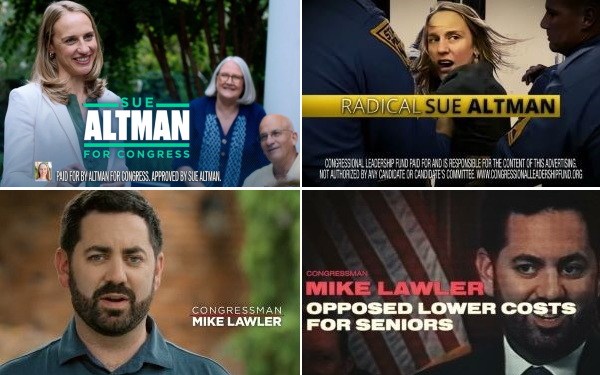
For weeks, the
campaign ads came fast and furious, and now they have come to an abrupt end -- presumably to the relief of millions.
They were the dominant category by far on local TV. As
Election Day drew nearer, they seemed to elbow everything out of the way as they jostled for airtime on our local New York newscasts and syndicated shows.
They were
aired in a pattern that repeated itself hundreds of times -- an attack ad next to a non-attack ad for one race, followed immediately by the same arrangement for another race.
This would go on, one race after another, for several minutes and then rerun in the next commercial break. Over and over again they came. It was frequency on
steroids.
The non-attack spots showed a candidate in rosy environments such as front porches, backyards and breakfast tables having meaningful coffees with
“regular” people.
advertisement
advertisement
The spot would highlight the candidate’s support of the police, the elderly, immigration reform and reproductive
rights.
Then, the very next spot -- put on by the opposition -- would refute all or most of it.
Around here, much of it revolved around either supporting police and law and order, or supporting police defunding and no-bail policies.
Generally speaking, the Republicans
hammered the Democrats on police and public safety, and Democrats stressed reproductive rights and the threat of Republican abortion bans.
In response, Democratic
candidates would claim they actually supported funding the police, not defunding them.
Republicans would
insist they did not ever vote to “ban” abortion as the opposition claimed.
The screenshots above tell the story. In the top row, Sue Altman -- a
Democrat who sought to unseat incumbent Republican Tom Kean Jr. in New Jersey’s 7th Congressional District -- is seen in her own ad (left) happily interacting with seniors on a suburban
porch.
In the other screenshot, she’s “Radical Sue Altman” being led off defiantly in handcuffs from a protest demonstration, in a spot
paid for by Kean supporters.
On the bottom row, Republican incumbent Mike Lawler of New York’s 17th Congressional
District is seen in the left image in one of his own ads.
On the right, in an ad from Lawler’s opposition,
Democratic challenger Mondaire Jones, Lawler is grainy with an evil smile because, the ad asserts, he “opposed lower costs for seniors” (lower costs for what, the copy does not
say).
One of the many Lawler ads that attacked Jones positioned “Radical Mondaire Jones” as a mere puppet of “AOC,” an acronym
designed to strike fear into every heart.
Note how, in both examples, “radical” was the operative word attached to each Democrat, as in “Radical Sue Altman
… bad for America! Bad for us!”
The rise of the word “radical” this year represented a ratcheting up of
election-season hyperbole. In past campaign cycles, the operative word was merely “liberal,” as in “[Insert name] is hopelessly liberal!” or “Liberal [insert name]
… bad for New Jersey!”
These examples only scratch the surface of the mudslinging back-and-forth that
characterized these two campaigns and hundreds like them across the country.
For the record, Altman lost to Kean, and Lawler beat Jones. But what, if
anything, did the opposing ads have to do with these outcomes?
If Kean’s campaign is claiming Altman does not support police, and then one of her
response ads comes on in which police are seen endorsing Altman, then who’s right?
If Jones’ campaign is accusing Lawler of voting for
legislation that would raise prescription prices and threaten social security, and then a Lawler spot comes on and says just the opposite, who are you to believe?
The answer is neither of them. The opposing messages in these commercials were so extreme that in effect, they canceled each other out.
Or to put it another way, Sue Altman
is either for police or against them. She can’t be both, can she?